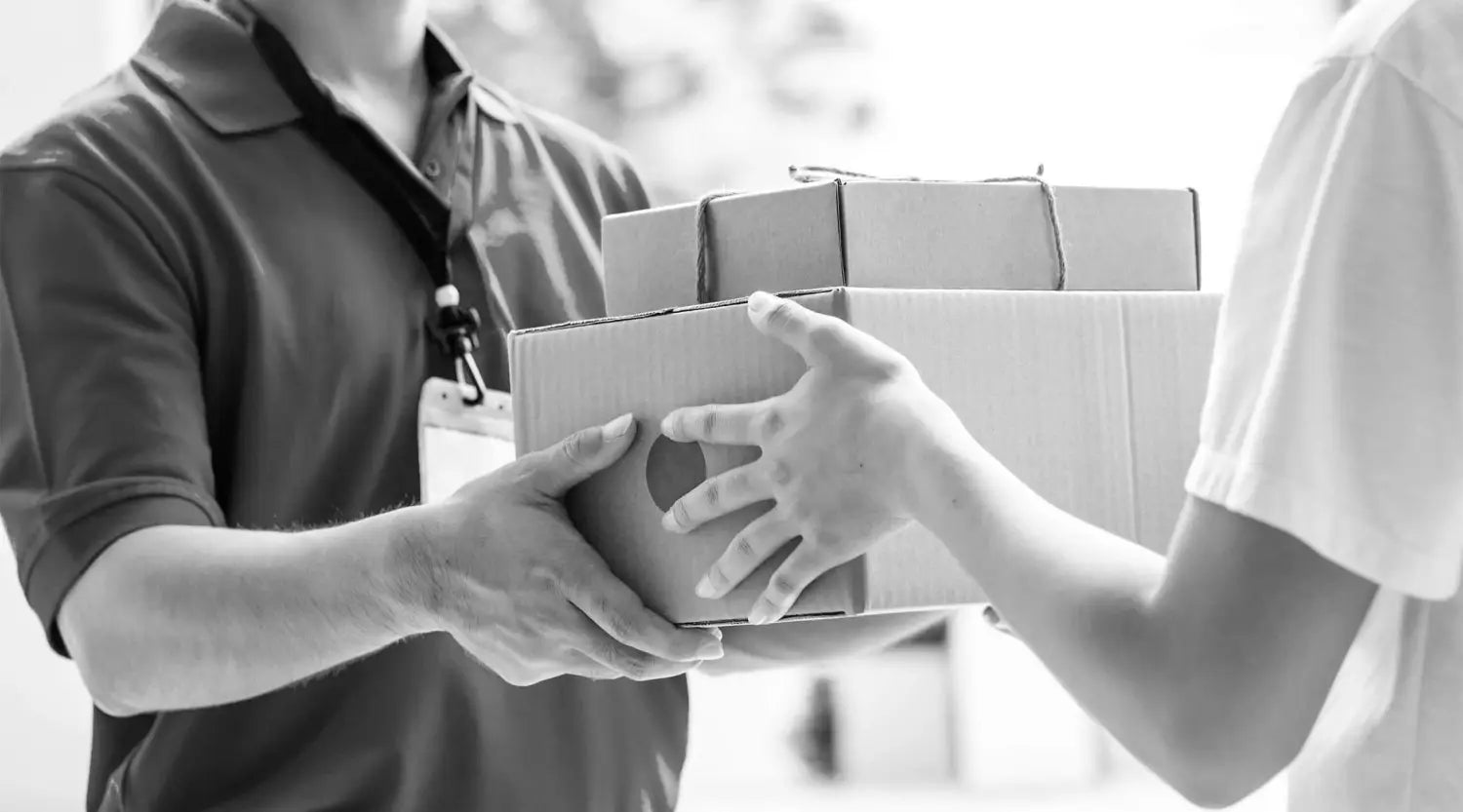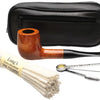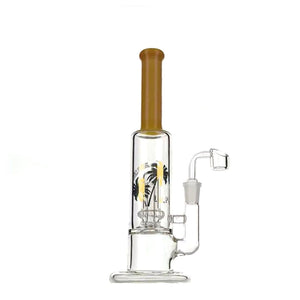How Do I Start a Drop Shipping Business? 6 Steps to Building a Successful Online Drop Shipping Business

Do you dream of owning an online store, as around 105,000 Americans do? Before recently, the process was laborious and costly.
Before the advent of drop shipping, e-commerce retailers had to purchase their inventory, find somewhere to store all the goods, and then handle the logistics of packaging and shipping to their customers.
Now?
With drop shipping, virtual retailers don't have to keep any actual inventory in stock. Instead, they team up with a supplier who takes care of all order fulfillment and shipment details. When an order comes in, the retailer submits that data, and the supplier takes care of the rest.
Sounds simple, right? It can be, but if you're wondering, "How do I start a dropshipping business?" it's best to start from the beginning. Today, we're sharing six steps that can turn you into the e-commerce leader you want to be.
Related Article: What is Shopify Dropshipping? How To Sell Smoke and Vape Products Dropshipping On Shopify.
Ready to learn more? Let's get started.

Related Article: HOW TO TRANSITION A BRICK-AND-MORTAR SMOKE SHOP TO AN ONLINE E-COMMERCE STORE
1. Decide on Your Niche
The most successful dropshipping companies are masters of one.
Rather than offering a little bit of everything, laser focus your efforts. Will you sell only toddler clothing? What about sports equipment, women's footwear, or cosmetics?
There isn't a right or wrong answer. The only guideline? Make sure you're interested in it in your niche! You'll need to be able to speak in an authoritative voice about your products, and if you're not passionate about them, it will show.
Not sure where to start your search? Here are a few considerations to keep in mind about every prospective niche you're considering.
Related Article: How To Sell CBD and Smoking Accessories Online
Potential Profit
As the owner of a dropshipping store, you don't have to worry about physical product details. Instead, your focus is on customer acquisition and digital marketing.
That means you're putting in the same amount of legwork for each item, regardless of its sales. A $15 t-shirt or a $1,000 watch both require online advertising. Keeping that in mind, look for products with a price point that makes them worth the effort.
Shipping Costs
True, the shipping falls on your manufacturer or supplier. Still, if you're forced to tack on a sky-high shipping charge to each item, it will deter prospective buyers in a heartbeat.
One recent study by the National Retail Federation revealed that 75% of online shoppers expect free shipping on all items, even those over $50. To keep up with demands and expectations, find products that are lightweight and easy to ship. This way, you can absorb the cost as a business expense while still offering the benefit of free shipping to your customers.
Smoking and Vaping Products
Want to attract a wider audience of buyers? Sell them something they can't buy in their own city. One of the appeals of online shopping is the wide array of products available, so get creative and look for one-of-a-kind smoke and vape products that will help your brand stand out.
Quick-Click Buys
Most people who browse drop shipping sites and make a purchase have the disposable income to do so. These types of stores advertise flash sales, bundle deals, and last-minute discount codes to encourage impulse buyers to convert.
Does your product speak to buyers looking to spend a little extra cash? Or does it require a thoughtful decision and a major investment? Make sure it's the former.
Search Volume
It goes without saying that you want to offer products that your target audience is searching for. When fine-tuning your niche, leverage online resources including Google Keyword Planner and Google Trends to find popular search terms related to your industry.
Type in the name of the objects you plan to sell. How's the traffic volume? If it's low, that means it's time to think about offering something else or restrategizing your position.

2. Check Out the Competition
Not only are you competing against other drop shippers, but keep in mind that you're also up against other online retail giants like Amazon.
When you start out, you may not be able to compete with the top-tier drop shipping services, and that's OK. You'll spin your wheels, deplete your resources and drive yourself crazy looking for a super-exclusive niche that's still untapped. If no one's buying it on Amazon, chances are low they'll head to your store to seek it out.
Instead, embrace competition.
Look for similar products that are in high demand and research what sellers are doing to inch ahead of their peers. If a product on one of these mega-sites isn't performing well, that's a sign it's not competitive. From high shipping costs to too-tight profit margins, there are myriad factors that can attribute to this outcome.

3. Find the Right Supplier
Especially in the beginning, you might feel tempted to settle for the first supplier that comes along. After all, you're ready to set up your store and start selling!
However, it's important to take your time with this next step. Linking your brand to the wrong supplier can create a domino effect that brings your whole business down.
As many dropshipping suppliers are headquartered overseas, make communication a top priority.
Ensure communication is clear, consistent, and quick. You'll need to have these lines open so you can relay order details and ensure a timely response. Otherwise, misunderstandings can lead to delays, which lead to irate customers, negative feedback, and a stain on your business.
During the initial interview process, also inquire about each supplier's scalability. Can they support your brand as it grows and demand increases? Or, is their storage capability limited, along with their support resources?
For other questions to ask potential partners, read online blogs and forums from others who have walked this road and found success.

4. Make a Website
You can't sell anything online without some form of internet presence! That means you'll need to have a website to get started.
Stick to a simple website builder that takes care of the backend development work for you, such as Shopify. You don't need an extensive tech background to get your site up and running on this platform and it also includes plenty of apps to help you sell smarter.
Of course, if your budget allows, you can get a slicker website when you team with a professional web designer and let him or her take the reins. Yet, it makes more sense to stick with these simple plug-and-play versions until your store takes off. Then, you can revisit the idea of expert design.

5. Attract Your Target Audience
Once your site is set up, and your store is live, it's time to reach out to those prospective buyers!
Start by creating a cost-effective lead-capture funnel to grow your email and sms contact list. Launch a campaign to request the contact information of anyone who visits your site or makes a purchase.
With that valuable data, you have the basis of an email marketing list! Use this platform to connect with your followers and encourage repeat purchases by emailing discount codes, fun giveaways, and other promotions.
6. Analyze Your Performance
Growth requires understanding. Unless you know how your dropshipping business is performing, how will you know how to tweak and improve it?
To that end, make it your goal to track every conversion. Where did the traffic originate? How long did it take the leads to convert? How did the path to purchase look for these customers?
Google Analytics is a great resource when you're looking to measure these metrics. Once you have the data you need, use it to scale your shop more effectively. Prioritize top performers while decreasing efforts spent on those lagging in sales.

How Do I Start a Drop Shipping Business? One Step at a Time
There's no surefire way to guarantee that your next business venture will be a red-hot one. Even the best ideas can fizzle out after a few months, while ideas no one expected to succeed can become industry disrupters and game-changers.
As such, the answer to the pivotal question of "How do I start a dropshipping business?" is simple. Take it one step a time, resisting the urge to rush ahead of yourself.
Do your due diligence and find a stellar supplier. Research your product niche to make sure it's popular, and then learn how to make it competitive. Create a dynamic website and commit to a digital marketing campaign.
These are steps you can't afford to skip, so take your time!
Interested in selling smoking accessories in your dropshipping store? We'd love to partner with you. We're an international brand that offers thousands of SKUs centered on the smoke and vape market.
Schedule a meeting
To learn more visit our Dropshipping Services page to take take this next step together!
Cannabis and industrial hemp are among the main topics for some time now in the medical world. Because studies have been administered in this field more than ever, people are starting to get new information about numerous cannabinoids found in these plants.
We’re all familiar with delta-9-THC as it’s the single most famous cannabinoid. However, what caught everyone’s attention recently is delta-8-THC. Although they have several differences, many people regard these two cannabinoids as the same thing.
Furthermore, delta-8 is more similar to CBD than delta-9, so some people have a hard time finding the differences between these two cannabinoids as well. So, here we’ll talk about delta-8 and whether it’s actually similar to CBD.
What is Delta-8?
Delta-8 is one of many cannabinoids found in cannabis plants. However, unlike delta-9, the amounts of delta-8 found in the natural cannabis plants are very limited, so companies often resort to other methods to produce more delta-8 for the market.
This typically means taking delta-9 cannabinoids, which are much larger in number, and isolating their THC compounds. With this process, you get a final product known as delta-8.
With this in mind, the is essentially a weaker version of delta-9-THC. It has many beneficial properties similar to delta-9 but is less potent. However, because it comes from the delta-9, it still has some psychoactive features, although larger doses are required for these features to show.
People are starting to be more curious about this cannabinoid, as it could serve as a replacement for delta-9, especially for someone wanting to avoid the extreme “high” effect delta-9 is known for. Delta-8 is used both for medicinal and recreational purposes, and it can be used for treating anxiety, pain, migraine, depression, poor appetite, and many other conditions.
What is CBD?
Cannabidiol, also known as CBD, is another cannabinoid found in the cannabis plant. Like delta-9 THC, CBD is a widely popular compound used to treat various issues, conditions, and disorders. However, CBD has a different molecular structure that affects our bodies in another way.
to get the beneficial properties of delta-9-THC, but it has little to no THC content. This means that CBD isn’t mind-altering, and it can’t provide the “high” effect even if used in large doses.
CBD is used for medicinal and recreational purposes, and it has very calming effects, as it induces relaxation, sleep, and treats anxiety.
CBD is known for its other health benefits, which can treat more severe conditions. It can be used as a natural treatment for multiple sclerosis, cancer symptoms, epilepsy, schizophrenia, depression, and even some disorders like PTSD and OCD.
Furthermore, CBD is widely used by the public, and it’s legal in most countries. This makes CBD quite accessible to everyone in various forms, including skincare, drinkables, edibles, tinctures, vaporizers, and so on.
Is Delta-8 Similar to CBD?
You might’ve noticed some similarities between delta-8 and CBD, so here we’ll describe their similarities and differences in a more detailed way.
First, when it comes to the effects these two cannabinoids have, delta-8 can have more potent effects than CBD, especially in larger amounts. While it’s almost impossible to overdo it with CBD, delta-8 can get you “high,” but larger doses are necessary to achieve this effect.
While both provide soothing and calming effects great for anxiety, stress, pain, and depression, delta-8 has euphoric effects unknown to CBD. So, they can be used to treat the same conditions, but keep in mind larger doses of delta-8 will have some psychoactive effects.
Secondly, regarding their legality issue, both delta-8 and CBD are legal in most countries. Most federal laws prohibit delta-9 because it has more than 0.3% THC, but delta-8 and CBD both fit in this percentage, making them legal. However, make sure to check the laws in your state before you make any purchases.
Thirdly, what divides these similar cannabinoids are the drug test results. As CBD has an entirely different molecular structure, it won’t show on the basic drug tests, while delta-8 might. As previously mentioned, delta-8 comes from a delta-9 isolate, so some tests aren’t advanced enough to distinguish between delta-8 and delta-9-THC.
Conclusion
All in all, delta-8 and CBD provide almost the same results to our body and mind, but they have different ways of achieving them. Other than that, it can be said CBD and delta-8 are similar to an extent.
Because of that, you might find one or the other more suitable for your needs, although you should keep in mind that delta-8 will have more substantial euphoric effects, which can also result in a failed drug test.
Of course, the most important thing is to be informed, so be sure to continue your online search and find out more about this topic.
We'd love to hear from you.






